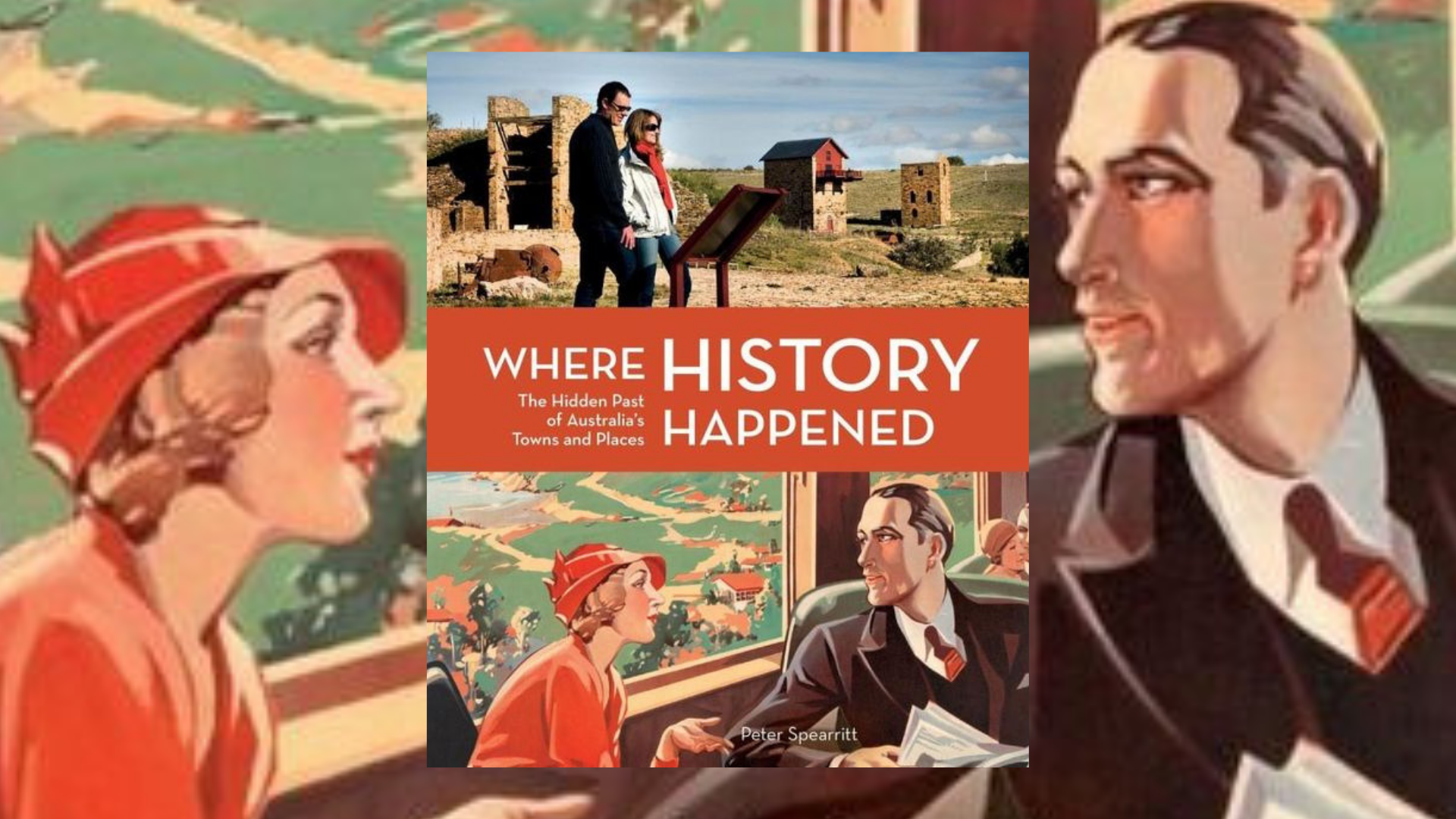
He loves a sunburnt country; a land of sweeping plains. Okay, that was actually Dorothea Mackellar. But the same also applies to Peter Spearritt. This historian, emeritus professor and author shows a real enthusiasm for the wonderful land of Oz in Where History Happened: The Hidden Past of Australia’s Towns & Places. This is one personal, colourful and quirky book.
As a boy, Spearritt and his family used to drive from Melbourne to Queensland to visit relatives for the holidays. These trips gave Spearritt a deep fondness for the many different places in this island home of ours. Spearritt is passionate about history and little-known places and this is apparent in every page here.
In this volume Spearritt traverses this land with pit-stops in every state and territory, as well as islands like Rottnest and Norfolk. This book is by no means a definitive one about Australia’s history or geography; there is a lot more that could have been included. What has made the cut however, are the things that interested Spearritt, or have had a family connection. His ancestors owned a bakery in Cooktown, whilst his Uncle was a monk at New Norcia in WA. Some people wouldn’t include Warwick Railway Station as an important place for the history books, but with Spearritt’s social history guide we learn to appreciate it as the birthplace of the Australian Federal Police (A notorious incident involving Prime Minister, Billy Hughes and some eggs saw the AFP born).
When some people think of Australia, they might consider a country with a rather short history. This mindset does a huge disservice to Aboriginal people and the long and rich history of their ancestors dating back tens of thousands of years. While there are some chapters about Aboriginal people, the focus is primarily on the things that happened after white settlement and Federation.
Our country’s history has been accused of having been white-washed. Spearritt however, does delve into some darker chapters from the country’s past, like the Myall Creek Massacre. It is good that Spearritt has chosen to go there and show both light and dark stories from history. This all adds to an important dialogue that shows us where we’ve come from, because this can only shape where we’re going to in the future. We can learn a lot from the mistakes made in the past.
This book also includes some fabulous photographs and pictures of posters and postcards sourced from the National Library, as well as photos by Frank Gurley, which are positively stunning. Spearritt’s concise and informative prose is complemented by these fetching images. Some of these show how our sensibilities have changed; a photo of a lady riding a turtle for example, is shocking even though it was acceptable at the time. You get the sense that Spearritt has explored quite a bit of land and info for this book, and it should encourage others to set out on their own adventures.
Where History Happened is a colourful tome dedicated to some lesser known aspects of Australian history. This work may not cover it all, but it does celebrate a few choice cuts in a smooth, accessible and clear-eyed way. Spearritt is an enthusiastic Australian historian and this book will encourage others to set out and see. This guide ultimately reminds us about a little quote by Daryl Somers, “You’ll never never know if you never never go!”
![]()
![]()
![]()
![]()
![]()
FOUR STARS (OUT OF FIVE)
Peter Spearritt’s Where History Happened is available now through NLA Publishing
